Product Showcase
Licensing Opportunity: CoWEDA, a Cold Weather Ensemble Decision Aid
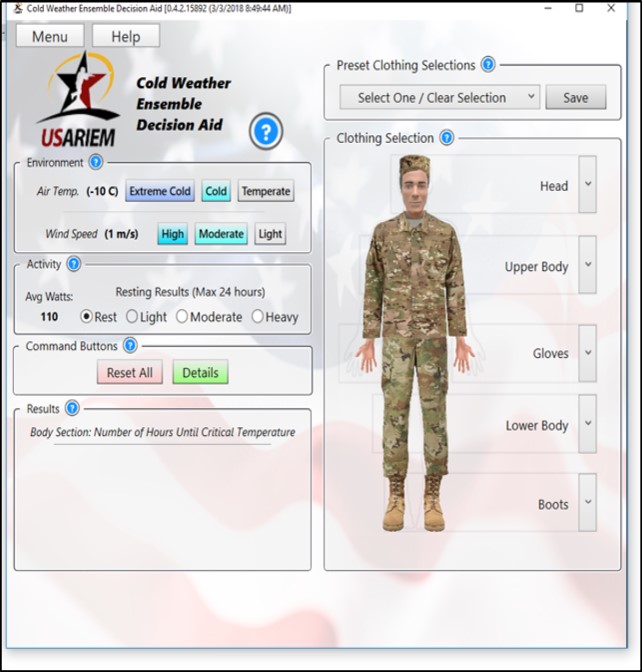 This computer software tool is designed to assist in the selection of clothing ensembles for different levels
of cold exposure using menus of clothing items. By integrating a thermoregulatory model, physiological criteria,
and clothing algorithms into a user-friendly application, it relates the clothing items to the physiology
consequences at anticipated activity and environmental conditions. CoWEDA guides users to select the most
appropriate clothing items to optimize human performance and mitigate risks of frostbite and hypothermia.
This computer software tool is designed to assist in the selection of clothing ensembles for different levels
of cold exposure using menus of clothing items. By integrating a thermoregulatory model, physiological criteria,
and clothing algorithms into a user-friendly application, it relates the clothing items to the physiology
consequences at anticipated activity and environmental conditions. CoWEDA guides users to select the most
appropriate clothing items to optimize human performance and mitigate risks of frostbite and hypothermia.
For information on licensing CoWEDA, contact USAMRDC Medical Technology Transfer at USArmy.Detrick.MEDCOM-USAMRMC.List.ORTA@health.mil.
The Sirkin-Hiles Rail (SHRAIL™)
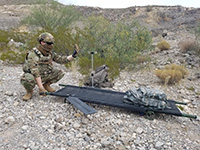
|
The SHRAIL™ allows medical personnel a means to firmly attach standard operating room medical devices to stretchers and standard NATO or Army litters. (Download the Fact Sheet) Category: Medical Device Commercial Application: Competitive Advantages:
Licensing Contact: |
Immersion Cooling Equipment (ICE) System
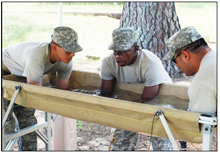 A healthy body temperature can be difficult to maintain when physically active in a hot environment,
potentially leading to heat stroke or other dangerous heat-related illnesses.
A healthy body temperature can be difficult to maintain when physically active in a hot environment,
potentially leading to heat stroke or other dangerous heat-related illnesses.
The Immersion Cooling Equipment (ICE) System is a lightweight, portable apparatus that reduces a person's
core temperature by transferring heat through the hands and forearm into cold water. The ICE System can
accommodate up to 6 adults at a time; multiple ones can be deployed for larger groups.
Read more about the Immersion Cooling Equipment (ICE) System, also known as the Cool Hand Luke.
Medical Tube Securing Device
 Often burn patients have problems breathing on their own due to scorched esophagi, and damaged
airways caused by smoke inhalation. Therefore it is necessary to intubate the patient so that
they can breathe. This technology will prevent cuts and tears in the patient's mouth caused by
endotracheal tubes.
Often burn patients have problems breathing on their own due to scorched esophagi, and damaged
airways caused by smoke inhalation. Therefore it is necessary to intubate the patient so that
they can breathe. This technology will prevent cuts and tears in the patient's mouth caused by
endotracheal tubes.
Read more about the Medical Tube Securing Device, also known as the Bright Bite Block.
ECTemp™

A simple real-time algorithm to estimate core body temperature from measures of heart rate, the Army seeks partners to license this technology for their respective heart rate monitors.
Read more about ECTemp™.
Triazines for Malaria Treatment & Prophylaxis
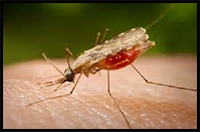 This triazine class of molecules represents a novel class of anti-malarial drugs that structurally do not
resemble current malaria treatments. This fact is important because, as with all infectious diseases, there
is continuing development of resistance to current drug treatments based on the chemical structure of the
drug agent.
This triazine class of molecules represents a novel class of anti-malarial drugs that structurally do not
resemble current malaria treatments. This fact is important because, as with all infectious diseases, there
is continuing development of resistance to current drug treatments based on the chemical structure of the
drug agent.
This particular chemical series also contains all the desirable features for an antimalarial agent: high
potency, potential for weekly dosing, safe and inexpensive to produce.
Read more about Triazines for Malaria Treatment & Prophylaxis.
2BAlert Smartphone App
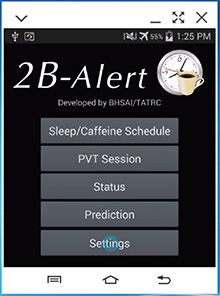 Sleep loss impairs alertness and cognitive performance. This smartphone app uses sleep-wake history and
caffeine consumption along with measurements of past performance as inputs to predict future alertness
and cognitive performance levels. Past and current performance are measured using a psychomotor vigilance
task (PVT) test for accurate, objective assessment.
Sleep loss impairs alertness and cognitive performance. This smartphone app uses sleep-wake history and
caffeine consumption along with measurements of past performance as inputs to predict future alertness
and cognitive performance levels. Past and current performance are measured using a psychomotor vigilance
task (PVT) test for accurate, objective assessment.
Read more about the 2BAlert Smartphone App.
Body Thermoregulation Using Skin Temperature Feedback
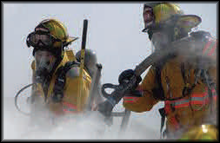 Thermoregulation is the process of maintaining a constant internal body temperature despite the environmental
temperature.
Thermoregulation is the process of maintaining a constant internal body temperature despite the environmental
temperature.
Certain occupations, such as military, space and firefighting applications, require workers to wear personal
protective equipment (PPE), which challenges the body's ability to thermoregulate due to its high insulative
properties and limited permeability. In a short period of time under hot conditions, physical and cognitive
performance can become severely compromised.
Current microclimate cooling (MCC) systems are primarily focused on liquid-cooled systems, however this approach
has a low battery life. Therefore, a battery efficient MCC system is needed for such strenuous professions.
Read more about Body Thermoregulation Using Skin Temperature Feedback.
Large-Scale Production of Human Serum Butyrylcholinesterase as a Bioscavenger
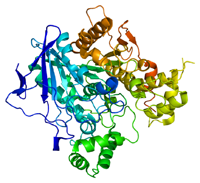 Exposure to organophosphorus compounds (OP) is a threat to military and civilian populations. Current antidotal
regiments for OP poisoning consist of pre- and post-treatment therapies, however they do not prevent post-exposure
incapacitation, convulsions, performance deficiencies and permanent brain damage.
Exposure to organophosphorus compounds (OP) is a threat to military and civilian populations. Current antidotal
regiments for OP poisoning consist of pre- and post-treatment therapies, however they do not prevent post-exposure
incapacitation, convulsions, performance deficiencies and permanent brain damage.
To overcome this obstacle, enzyme bioscavengers are used as a pretreatment to sequester toxic OPs. Human serum
butyrylcholinesterase (HuBChE) has been successfully identified and used as a safe and efficacious prophylatic
treatment to prevent OP poisoning without the requirement of additional post-exposure therapy. It provides a
long-lasting protection as a prophylactic treatment and does not produce any adverse immunological responses in humans.
However purification of HuBChE is difficult to produce in large quantities. The current invention provides a method
for obtaining large quantities of HuBChE.
Read more about Large-Scale Production of Human Serum Butyrylcholinesterase as a Bioscavenger.
Dynamic Cadaver: Ultimate Training Model for Lifesaving Procedures
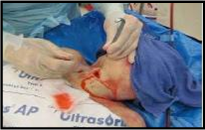 Accurate simulation training is essential for emergency medical professionals to work confidently
and efficiently under pressure in order to help improve patient survival rates.
Accurate simulation training is essential for emergency medical professionals to work confidently
and efficiently under pressure in order to help improve patient survival rates.
Current use of plastic mannequins and high fidelity simulators lacks the realistic tissue feel,
physiologic response, true anatomy, and provider reaction when presented with a patient with
life-threatening conditions. A high fidelity model will better prepare medical professionals to
save patients' lives.
Read more about the Dynamic Cadaver.
Chronic Stress Biomarkers and Optimal Workloads
 Stress impacts gene expression, behavior, metabolism, and other functions, including the immune
system. Chronic physiological and psychological stresses are known to impair protective immunity
towards infection leading to an increase susceptibility to illness.
Stress impacts gene expression, behavior, metabolism, and other functions, including the immune
system. Chronic physiological and psychological stresses are known to impair protective immunity
towards infection leading to an increase susceptibility to illness.
The current invention provides
a comprehensive description of specific molecular responses to stress via biomarkers, which allows
for greater insight into how a subject is responding to chronic stress. Such information can be
used, for example, to improve the adaptation to stress (i.e., the training effect) through
scientifically managing an optimal exposure level to stress over a given time period for an individual
and activity.
Read more about Chronic Stress Biomarkers and Optimal Workloads.
Altitude Acclimation Tools
 High altitude exposure can negatively affect health, mental and physical performance because it
lowers the oxygen supply to body tissues, the condition known as hypoxia, which can lead to
altitude sickness. Altitude acclimatization allows a person to mitigate the impact of altitude
exposure.
High altitude exposure can negatively affect health, mental and physical performance because it
lowers the oxygen supply to body tissues, the condition known as hypoxia, which can lead to
altitude sickness. Altitude acclimatization allows a person to mitigate the impact of altitude
exposure.
Currently, no tests can predict or monitor individual susceptibility to altitude sickness, but
two technologies developed by the Army use population-based data to provide useful tools for
altitude-related activities: the Altitude Illness and Acclimatization Management Decision Aid,
which provides altitude acclimatization protocols and predicts the risk of altitude illness;
and the Automated Altitude Acclimatization Monitor, which provides portable, real-time altitude
acclimatization status outputs in both text and graphical formats.
Read more about Altitude Acclimation Tools.
Shigella Invaplex as Transport Mechanism
 Invaplex is a transport mechanism derived from Shigella bacteria. It stimulates an
endocytotic process to internalize materials such as functional proteins and biologically
active nucleic acids across a wide array of mammalian cell membranes and into the cytoplasm.
Invaplex is a transport mechanism derived from Shigella bacteria. It stimulates an
endocytotic process to internalize materials such as functional proteins and biologically
active nucleic acids across a wide array of mammalian cell membranes and into the cytoplasm.
The technology has three applications. First, it serves as a mechanism to transport materials
across cell membranes. Second, it can be used as an adjuvant, which enhances the immune
response by targeting and inducing uptake by the immune cells in the mucosa. Third, it can be
used as a vaccine by utilizing the Shigella secretion proteins and capitalizing on the ability
to quickly become internalized.
Read more about Shigella Invaplex as Transport Mechanism.
Intelligent Aquatic Biomonitor System
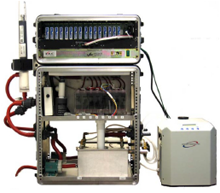 Water is a vital resource essential for human survival. To keep water safe, continuous biomonitoring
is warranted in many circumstances. The Intelligent Aquatic Biomonitor System combines modern-day
science with Mother Nature by employing bluegill fish to detect chemical contamination.
Water is a vital resource essential for human survival. To keep water safe, continuous biomonitoring
is warranted in many circumstances. The Intelligent Aquatic Biomonitor System combines modern-day
science with Mother Nature by employing bluegill fish to detect chemical contamination.
The technology monitors for the intentional or unintentional addition of chemical contaminants in water
using bluegills. When the fish are exposed to toxicants, even at very low levels, they will change their
breathing and movement behavior. The device monitors and captures the electrical signals generated by
the muscles in the fish as they breathe and move and will issue an alert if the results show abnormal
behavior of the fish in response to toxicants.
Read more about the Intelligent Aquatic Biomonitor System.
STA-COM Pelvic Trauma Belt
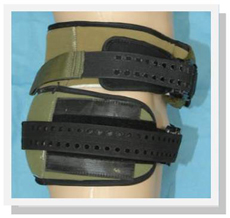 A subset of pelvic fracture sufferers are at high risk of fatality due to uncontrolled internal bleeding.
Emergency treatment for pelvic trauma usually begins with some form of pelvic stabilization immediately
after the causative event, which aims to limit pelvic movement and further injury. Even with advances in
treatment methods for these types of injuries, the ability to control internal bleeding resulting from
pelvic trauma may be inadequate when using presently available devices.
A subset of pelvic fracture sufferers are at high risk of fatality due to uncontrolled internal bleeding.
Emergency treatment for pelvic trauma usually begins with some form of pelvic stabilization immediately
after the causative event, which aims to limit pelvic movement and further injury. Even with advances in
treatment methods for these types of injuries, the ability to control internal bleeding resulting from
pelvic trauma may be inadequate when using presently available devices.
In particular, Army medical researchers have discovered that pelvic fractures caused by high-energy
vertical forces emanating from beneath the victim can cause internal bleeding that is not adequately
addressed by current stabilization techniques and devices.
One of those researchers has developed a dual-belted pelvic trauma care device that consists of a lower
belt for fracture stabilization and an upper belt designed to compress areas that are sources of
bleeding during pelvic trauma.
Read more about the STA-COM Pelvic Trauma Belt.
WoundFlow -- Computerized Mapping and Tracking of Burns
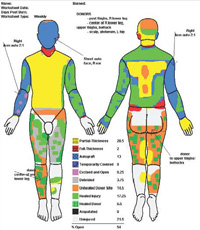 Accurate mapping and tracking of burn injuries is critical for creating and executing an
effective treatment plan for burn patients. Most burn mapping procedures are paper-based,
which can lead to variable treatment across patients and providers. Earlier versions of
electronic mapping tools are not readily available with the features offered by WoundFlow.
Accurate mapping and tracking of burn injuries is critical for creating and executing an
effective treatment plan for burn patients. Most burn mapping procedures are paper-based,
which can lead to variable treatment across patients and providers. Earlier versions of
electronic mapping tools are not readily available with the features offered by WoundFlow.
WoundFlow is a user friendly, intuitive, electronic burn mapping tool used for documenting
full and partial thickness burns and ongoing surgical treatment modalities. This technology
uses the same body segment percentages as the standard Lund-Browder chart and is able to
calculate the total body surface area of burns, grafting, donors and healing. It also
features an animation mode and can upload patient photographs that can be easily viewed
by the entire multidisciplinary staff.
Read more about WoundFlow.
OMARA Tube™ (Orally Maneuvered Airway Removable Applicator)
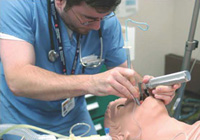 Endotracheal intubation is one of the most common procedures of airway management that
requires a great deal of clinical experience to master. When performed improperly, complications
may rapidly lead to a patient's death. The OMARA Tube™ is a long, thin disposable stylet
that attaches to and improves the function of a standard endotracheal tube. The innovative
device includes a durable, exploratory portion that protrudes from the tip of the intubation tube,
acting as a guide to insert the tube into the vocal chords and into the trachea, bypassing the
need for a large endotracheal tube through the vocal chords. It also employs a handle that
allows for accurate positioning of the tube. Ultimately, the OMARA Tube™ augments and
improves conventional intubation by transforming the endotracheal tube into a rescue airway device.
Endotracheal intubation is one of the most common procedures of airway management that
requires a great deal of clinical experience to master. When performed improperly, complications
may rapidly lead to a patient's death. The OMARA Tube™ is a long, thin disposable stylet
that attaches to and improves the function of a standard endotracheal tube. The innovative
device includes a durable, exploratory portion that protrudes from the tip of the intubation tube,
acting as a guide to insert the tube into the vocal chords and into the trachea, bypassing the
need for a large endotracheal tube through the vocal chords. It also employs a handle that
allows for accurate positioning of the tube. Ultimately, the OMARA Tube™ augments and
improves conventional intubation by transforming the endotracheal tube into a rescue airway device.
Read more about OMARA Tube™.



